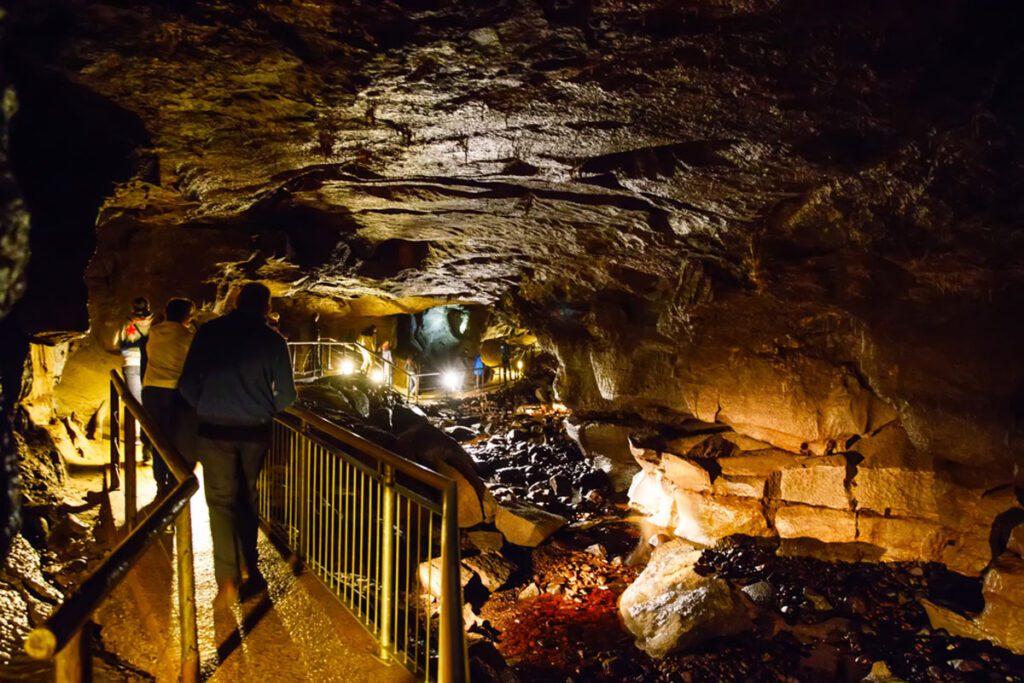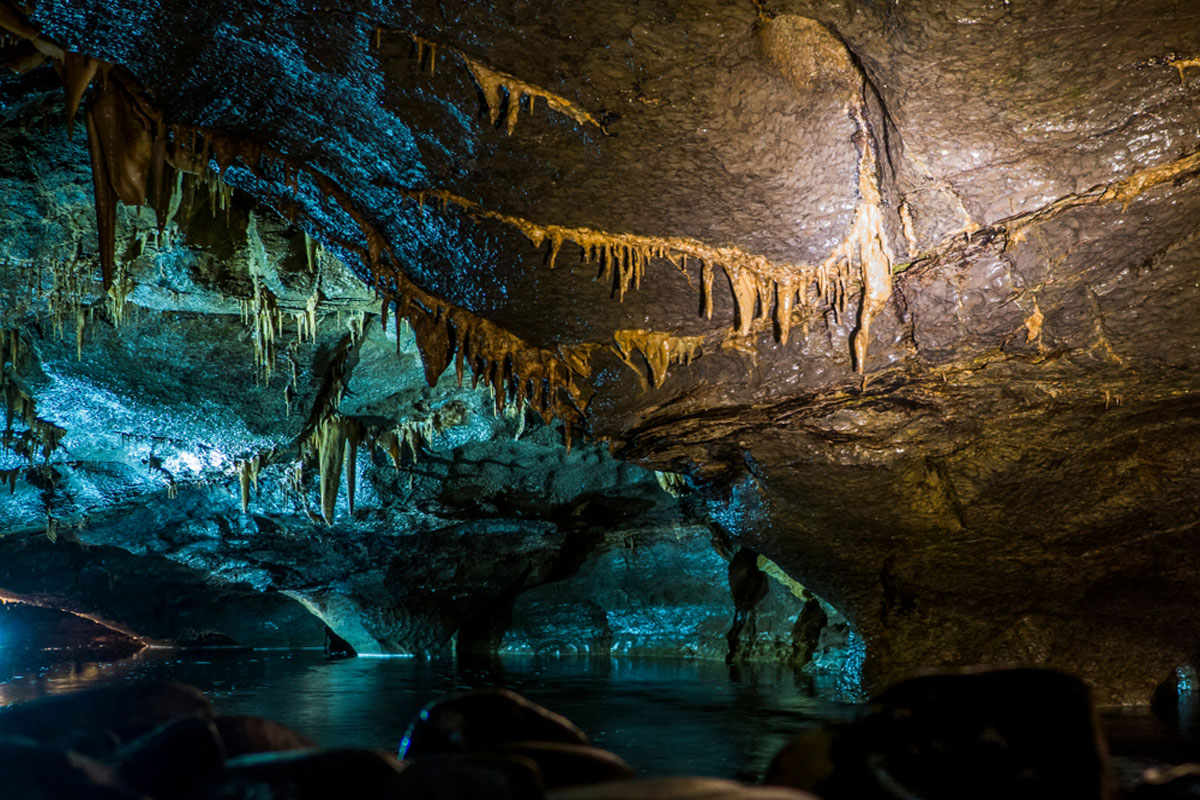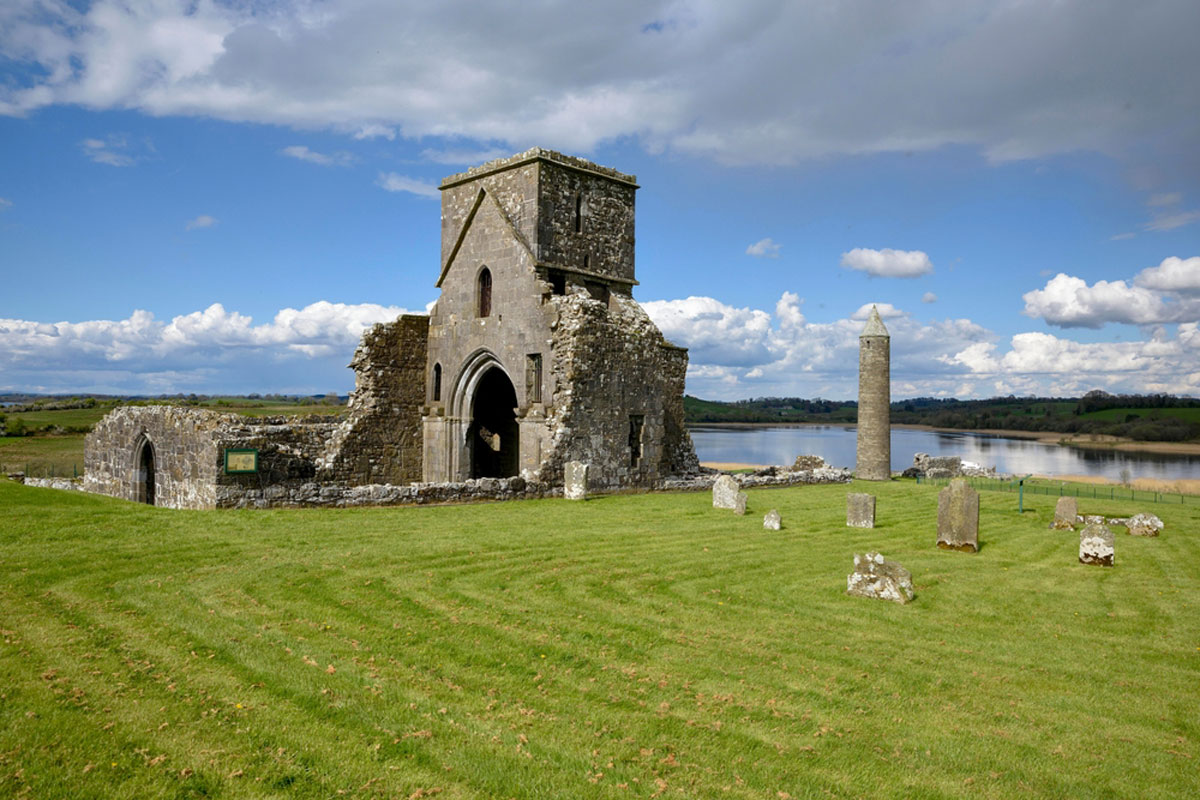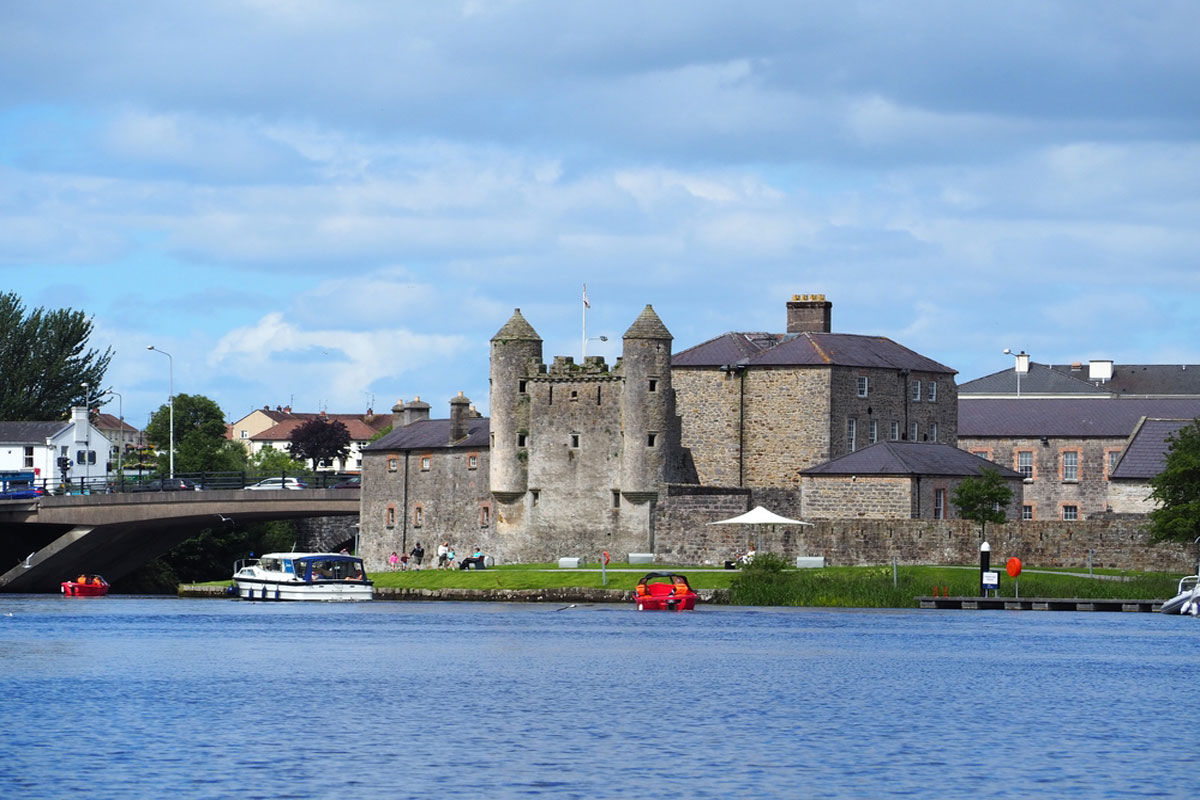Introduction to the Marble Arch Caves
The Marble Arch Caves, located in County Fermanagh, Northern Ireland, are a mesmerizing natural wonder, offering a captivating journey into the subterranean world. These caves are part of the Marble Arch Caves Global Geopark, recognized for its outstanding geological heritage. The Geopark, which spans the border between Northern Ireland and the Republic of Ireland, features a variety of landscapes, from rolling hills and tranquil lakes to ancient woodlands and dramatic caves.
The caves themselves are renowned for their stunning formations, including stalactites, stalagmites, flowstones, and other unique calcite deposits that have been sculpted by nature over millions of years. Visitors are treated to an awe-inspiring experience as they explore the underground passages and chambers, marveling at the beauty and complexity of the formations.
Location and Significance
The Marble Arch Caves are situated in the picturesque Cuilcagh Mountain region, an area that boasts rich biodiversity and striking landscapes. The caves derive their name from the nearby Marble Arch, a natural limestone arch that marks the entrance to the cave system. This region is part of the UNESCO Global Geopark, which highlights its international geological importance.
The caves are a prime example of karst topography, a landscape formed from the dissolution of soluble rocks, such as limestone, dolomite, and gypsum. This process creates underground drainage systems with sinkholes, caves, and disappearing streams. The Marble Arch Caves are among the finest show caves in Europe, attracting thousands of visitors each year who come to witness their natural beauty and learn about the geological processes that created them.
Visitor Experience
A visit to the Marble Arch Caves begins with a guided tour, where knowledgeable guides lead visitors through a series of well-lit and accessible pathways. The tour typically lasts about 75 minutes and includes a combination of walking and a short boat trip along an underground river. As you navigate through the cave system, you’ll encounter breathtaking formations and learn about the history and geology of the caves.
The highlight of the tour is undoubtedly the vast chambers adorned with intricate calcite formations. The delicate and translucent nature of these formations, combined with the carefully placed lighting, creates an otherworldly ambiance. The underground river adds to the enchantment, reflecting the beauty of the cave walls and formations.
The Geological Formation of the Marble Arch Caves
The Marble Arch Caves are a prime example of karst topography, a landscape characterized by the dissolution of soluble rocks such as limestone, dolomite, and gypsum. Understanding the geological formation of these caves provides insight into the powerful natural forces at work beneath the Earth’s surface.
Limestone and Karst Formation
The story of the Marble Arch Caves begins over 330 million years ago during the Carboniferous period when much of what is now Northern Ireland was covered by a shallow tropical sea. Over time, the accumulation of marine sediments, including the shells and skeletons of sea creatures, formed thick layers of limestone. As geological forces shifted and the sea receded, these limestone deposits were exposed to the elements.
Limestone is highly susceptible to chemical weathering, particularly by slightly acidic water. Rainwater, which absorbs carbon dioxide from the atmosphere and soil, forms a weak carbonic acid. When this acidic water seeps into cracks and joints in the limestone, it begins to dissolve the rock, slowly enlarging the fissures over thousands of years. This process creates the distinctive features of karst landscapes, such as sinkholes, disappearing streams, and, ultimately, caves.
The Formation of the Marble Arch Caves
The Marble Arch Caves were formed through a combination of chemical weathering and the physical processes of erosion. As acidic water percolated through the limestone, it gradually dissolved the rock, creating a network of underground passages and chambers. Over millions of years, these passages expanded, and new ones formed as water continued to carve its way through the rock.
The cave system is primarily composed of horizontal passages, reflecting the bedding planes of the limestone. Vertical shafts and chambers formed as water found its way through vertical joints and faults in the rock. The underground river that flows through the caves played a crucial role in shaping the cave system, eroding the limestone and transporting dissolved material away.
Stalactites, Stalagmites, and Flowstones
One of the most striking features of the Marble Arch Caves is the array of calcite formations, including stalactites, stalagmites, and flowstones. These formations are created by the deposition of calcium carbonate, which is carried in solution by dripping water.
- Stalactites form from the ceiling of the cave as water drips down, leaving behind tiny deposits of calcite. Over time, these deposits build up to create icicle-like formations hanging from the ceiling.
- Stalagmites form on the cave floor, directly below stalactites, as water drips down and deposits calcite. These formations grow upwards and can eventually merge with stalactites to form columns.
- Flowstones are formed by sheets of water flowing over the walls or floors of the cave, depositing layers of calcite and creating smooth, rippled surfaces.
These formations grow very slowly, often only a few millimeters per year, making the extensive decorations in the Marble Arch Caves a testament to the passage of geological time.
The Role of Water
Water has been the principal agent in the formation and evolution of the Marble Arch Caves. The underground river that flows through the cave system is fed by surface water that enters through sinkholes and swallow holes on the karst plateau above. This river has not only carved out the passages but also continues to shape the caves today, maintaining their dynamic nature.
The Diverse Geological Formations
As you journey deeper into the Marble Arch Caves, the diverse geological formations become more prominent and captivating. These formations, shaped over millions of years, tell a fascinating story of the Earth’s history and the powerful forces of nature at work.
Stalactites and Stalagmites
One of the most striking features of the Marble Arch Caves is the presence of stalactites and stalagmites. Stalactites hang from the cave ceiling, formed by the slow dripping of mineral-rich water. Over time, these drips deposit calcite, creating icicle-like formations. Stalagmites rise from the cave floor, built up by the drips falling from stalactites. When a stalactite and stalagmite meet, they form a column or pillar, creating a stunning natural sculpture.
Flowstones and Draperies
Flowstones are another beautiful formation found in the Marble Arch Caves. These sheet-like deposits form when water flows down the walls or along the floor, leaving behind layers of calcite. Draperies, or curtain formations, are delicate, thin sheets of calcite that hang from the ceiling, resembling folded curtains. These formations often have intricate patterns and can be translucent, adding to their ethereal beauty.
Helictites and Cave Pearls
Helictites are a unique and intriguing formation found in the Marble Arch Caves. Unlike stalactites, which grow downwards, helictites grow in various directions, seemingly defying gravity. This irregular growth is due to capillary forces and air currents within the cave. Cave pearls are another rare formation, created by the constant movement of water in small pools. These smooth, spherical calcite deposits are a testament to the delicate balance of conditions required for their formation.
Pillars and Columns
Throughout the Marble Arch Caves, you will encounter impressive pillars and columns formed by the joining of stalactites and stalagmites. These structures can reach significant heights and add a sense of grandeur to the underground landscape. They serve as silent witnesses to the passage of time and the persistent natural processes that have shaped them.
Cave Bacon and Shields
The Marble Arch Caves also feature formations with whimsical names like “cave bacon” and “shields.” Cave bacon, or cave ribbon, is a type of flowstone that resembles strips of bacon, with alternating light and dark bands of calcite. Shields are circular or oval formations that appear to “float” on the cave walls, formed by the outward growth of calcite deposits around a central point.
Cave Coral and Popcorn
Smaller, yet equally fascinating formations in the Marble Arch Caves include cave coral and popcorn. Cave coral consists of tiny, knobby clusters of calcite that resemble marine coral. Popcorn formations are small, rounded clumps of calcite that look like popped corn kernels. These formations add texture and variety to the cave’s landscape, showcasing the diversity of natural processes at work.
Underwater Formations
In parts of the Marble Arch Caves where water still flows, you can observe underwater formations like rimstone pools and submerged stalactites. Rimstone pools are formed by the slow buildup of calcite around the edges of pools, creating stepped terraces. Submerged stalactites grow beneath the water’s surface, adding an extra layer of intrigue to the cave’s already mesmerizing scenery.
The diverse geological formations of the Marble Arch Caves offer a spectacular display of nature’s artistry. Each formation tells a story of time, water, and mineral deposits, creating a subterranean landscape that captivates visitors. As you explore these formations, you gain a deeper appreciation for the natural processes that have shaped this underground wonder. The Marble Arch Caves not only provide a glimpse into the Earth’s geological history but also inspire a sense of awe and wonder at the beauty hidden beneath our feet.

Flora and Fauna of the Marble Arch Caves
The Surface Ecosystem
While the Marble Arch Caves themselves are a world of stone and water, the surface area surrounding the caves is rich in diverse plant and animal life. The caves are situated within the Marble Arch Caves Global Geopark, which features lush woodlands, rolling hills, and a variety of habitats that support numerous species.
Woodland Flora
The woodlands around the Marble Arch Caves are home to a variety of trees, shrubs, and wildflowers. Common tree species include oak, ash, and hazel, providing a canopy that shelters an understory of ferns, mosses, and flowering plants such as bluebells and primroses. These woodlands create a vibrant and dynamic ecosystem that changes with the seasons, offering visitors a different experience each time they visit.
Cave-Dependent Fauna
Inside the caves, the environment is less hospitable to life due to the absence of light and constant temperatures. However, several specialized species have adapted to this unique habitat. Bats are the most notable inhabitants, using the caves for roosting and hibernation. The most common species found in the Marble Arch Caves are the brown long-eared bat and the lesser horseshoe bat.
Invertebrates and Microorganisms
The cave environment also supports a variety of invertebrates and microorganisms. Cave crickets, beetles, and spiders have adapted to the darkness and constant humidity. These creatures are often colorless and blind, having evolved to survive in a world without light. Microorganisms such as bacteria and fungi play a crucial role in the cave’s ecosystem, breaking down organic matter and contributing to nutrient cycling.
Aquatic Life
The streams and rivers that flow through the Marble Arch Caves support unique aquatic life. Blind and colorless cave fish and shrimp are some of the remarkable species that have adapted to the dark, subterranean waters. These creatures have evolved to navigate and find food in complete darkness, relying on other senses such as touch and smell.
Conservation Efforts
The Marble Arch Caves and their surrounding areas are part of a protected Geopark, emphasizing the importance of conservation. Efforts are made to preserve both the geological formations within the caves and the diverse ecosystems above ground. Visitors are encouraged to respect the natural environment, ensuring that this unique habitat remains undisturbed for future generations to enjoy.
The flora and fauna of the Marble Arch Caves and their surroundings add another layer of fascination to this natural wonder. From the lush woodlands above to the specialized creatures below, the area is teeming with life that has adapted to a variety of habitats. Exploring the Marble Arch Caves offers not only a journey through geological time but also a glimpse into the resilience and diversity of nature.
Human History and Cultural Significance
Early Inhabitants and Discoveries
The Marble Arch Caves have long been a point of fascination for humans. Evidence suggests that early inhabitants of the region may have been aware of the caves, using them for shelter or as a source of water. However, it wasn’t until much later that the true extent of the caves was discovered and explored.
Discovery and Exploration
The modern exploration of the caves began in the late 19th and early 20th centuries. They were first documented in 1895 by French speleologist Édouard-Alfred Martel and his Irish colleague Lyster Jameson. Their exploration marked the beginning of a more systematic study of the caves, revealing their stunning formations and extensive network of passages.
Archaeological Finds
Over the years, various archaeological discoveries have been made in and around the Caves. Tools, pottery, and other artifacts found in the vicinity suggest that the area has been of significance to humans for thousands of years. These findings provide valuable insights into the lives of the early inhabitants and their interaction with the natural environment.
Cultural Significance
The Marble Arch Caves hold a special place in local culture and heritage. They are not only a natural wonder but also a symbol of the region’s rich history. Stories and legends associated with the caves have been passed down through generations, adding a layer of mystique and cultural depth.
Geopark Designation
In 2001, the caves were designated as part of the Marble Arch Caves Global Geopark, the first of its kind in the United Kingdom and Ireland. This designation highlights the geological importance of the caves and their role in the broader landscape. The Geopark status also emphasizes the importance of conservation and sustainable tourism, ensuring that the caves and their surroundings are protected for future generations.
Tourism and Education
Today, the caves are a major tourist attraction, drawing visitors from around the world. Guided tours provide an educational experience, offering insights into the geological formations, the ecosystem, and the human history of the area. The visitor center features interactive exhibits and displays, enhancing the educational value of the site.
Community and Cultural Events
The caves and the Geopark host various community and cultural events throughout the year, celebrating the natural and cultural heritage of the area. These events include guided walks, educational workshops, and cultural festivals, fostering a deeper connection between the local community and the natural environment.
Conclusion
The human history and cultural significance of the Marble Arch Caves add a rich layer of context to this natural wonder. From early inhabitants and archaeological discoveries to modern exploration and Geopark designation, the caves have been a source of fascination and inspiration. They continue to play a vital role in the local community, serving as a center for tourism, education, and cultural events. Exploring the Marble Arch Caves offers not only a journey through geological time but also a connection to the enduring human story that surrounds them.
Natural Attractions
- Marble Arch Caves Global Geopark – A UNESCO geopark featuring stunning caves, underground rivers, and walking trails.
- Lough Erne – A network of beautiful lakes ideal for boating, fishing, and wildlife spotting.
- Cuilcagh Mountain Park – Known for the Cuilcagh Boardwalk Trail, often called the “Stairway to Heaven,” offering breathtaking views.
- Florence Court – A magnificent 18th-century estate with woodland walks and a historic house.
- Castle Archdale Country Park – A park with trails, picnic areas, and World War II history.
Historical and Cultural Sites
- Enniskillen Castle – A historic castle housing the Fermanagh County Museum and the Inniskillings Museum.
- Devenish Island – An ancient monastic site with well-preserved ruins and a round tower.
- Belleek Pottery Visitor Centre – Showcasing the craftsmanship of Belleek Pottery, Ireland’s oldest working pottery.
- Tully Castle – The ruins of a 17th-century fortified house with gardens and lake views.
- Crom Estate – A National Trust property with woodland, ruined castles, and tranquil lakes.
Outdoor Activities
- Water Sports on Lough Erne – Activities include kayaking, paddleboarding, and sailing.
- Erne Boat Hire – Explore the waterways with self-drive boats or guided tours.
- Cycling and Walking Trails – Scenic routes around Fermanagh, including the Kingfisher Cycle Trail.
- Equestrian Experiences – Horseback riding through the stunning countryside.
Scenic Drives and Villages
- Fermanagh Lakelands Scenic Drive – A picturesque route showcasing the beauty of the lakes and countryside.
- Enniskillen Town – A vibrant town with shops, cafes, and historical landmarks.
- Lisnaskea – A charming town with access to Lough Erne and local markets.
- Kesh – A quaint village popular with anglers and nature enthusiasts.
Unique Experiences
- Share Discovery Village – A holiday village offering activities like canoeing, archery, and team-building events.
- Boho Caves – A hidden gem with ancient cave systems and archaeological significance.
- Monea Castle – A striking 17th-century castle ruin surrounded by lush landscapes.
- St. Michael’s Church – A historic church with stunning stained-glass windows.
- Blakes of the Hollow – A traditional Irish pub in Enniskillen, famous for its Game of Thrones “Door of Thrones.”
County Fermanagh’s mix of natural beauty, history, and outdoor activities makes it a must-visit destination for all travelers.
Helpful Resources






